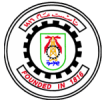Brief History of Cairo University
Cairo University became a reality on December 21st, 1908 after the sincere and persistent efforts of a group of dignitaries which started some years earlier. Of these were included the well-known national leader Moustafa Kamel, the distinguished scholar and religious leader Sheik Mohammed Abdu and some wealthy nationals such as Ahmed El-Menshawy Pasha, Moustafa Bek El-Ghamrawy and many others. The first permanent committee of the University was established on March 12th, 1908. Following were elaborate preparatory efforts by the national leader Saad Zaghloul, the committee was chaired by Prince Ahmed Fouad, and Vice-Chaired by Saad Zaghloul himself. Following the appointment of Saad Zaghloul as Minister of Education, the prominent national scholar Kassem Amin was appointed as Committee Vice-Chairman.
During the early days of the University, lectures were given in various locations and were advertised in the press. A palace was then rented to house lecture halls. The first program of the, then, private university included the following five programs:
· Islamic Civilization
· Ancient Civilizations in Egypt and the East
· History, Geography and Languages of the Arabs
· History of French Literature
· History of English Literature
However, the University had always been very flexible and continuously developing and modernizing its programs.
On March 30th, 1914 the foundation stone of the permanent site of the University was laid down at Giza. This event marked the success of the elaborate and sincere efforts of Princess Fatma Ismail and Prince Youssef Kamal who generously donated fund and land for this noble cause. The donated land has ever since been occupied by the University Campus.
The Board of the University welcomed the efforts of the government to establish a state-owned university, and an agreement was reached to group private and state universities in one establishment of higher education. Consequently, a royal decree was issued on May 19th, 1925 to consider the Private University as the Faculty of Arts in the new state university. The House of Parliament passed a law establishing the “Egyptian University”; composed of the Faculties of Arts, Science, Law, Medicine (including Pharmacy and Dentistry). In 1935, the Royal School of Engineering, the High Schools of Agriculture and Commerce, and the School of Veteran Medicine were annexed to the University and renamed “Faculties” instead of “Schools.” The “Egyptian University” was renamed twice: in 1940 as “ the University of King Fouad the 1st, “and in 1953 as “Cairo University.”
Cairo University has successfully been undertaking its mission of delivering education, research and cultural duties over the years. It is considered as the mother university among other younger universities in Egypt. Cairo University is also offering its education and research facilities to Arab and foreign students and scientists, and has become well-known world wide.
The Emblem of “Cairo University” takes the image of one of the Gods of Ancient Egypt, King Gehouti or Toht. Toht was regarded by the ancient Egyptians as the God of Wisdom and Knowledge; a choice which perfectly reflects the major duties of a modern university. God Toht is usually represented by either one of the two symbols: that of Ibis which is a large heron bird or the monkey. God Toht was worshipped by the Ashmouneins. The God takes the image of a man crowned with the head of bird Ibis and usually drawn seated and holds pen and paper in hand as if ready for writing. Important and valuable archaeological discoveries connected with this God were done under the sponsorship of Cairo University in the area of Ashmounein and Tuna El Gabal.
Currently, Cairo University includes 22 Faculties and Institutes serving about 155,000 students with 3,158 faculty members, 2,361 assistant lecturers & Teaching Assistants and 12,233 employees. Cairo University has about 150 research centers and business units. There is also a hospital for the students, a printing press, a central library as well as libraries for the faculties. The University has at present one branch in Khartoum (Sudan) after the transformation of Beni-Suef and Fayoum branches (in Upper Egypt) into independent universities in 2006.
The university is currently under the chairmanship of Prof. Dr. Ali Abdel-Rahman, and supported by the following:
Prof. Dr. Hamid Taher Hassanein
Vice-Rector for Education and Student Affairs
Prof. Dr. Moatz Khurshid
Vice Rector for Graduate Studies and Research
Prof. Dr. Abd Allah Tatawi
Vice-Rector for Community Service and Environmental Development
Prof. Fatima Yusuf
Secretary-General of the University of Cairo
